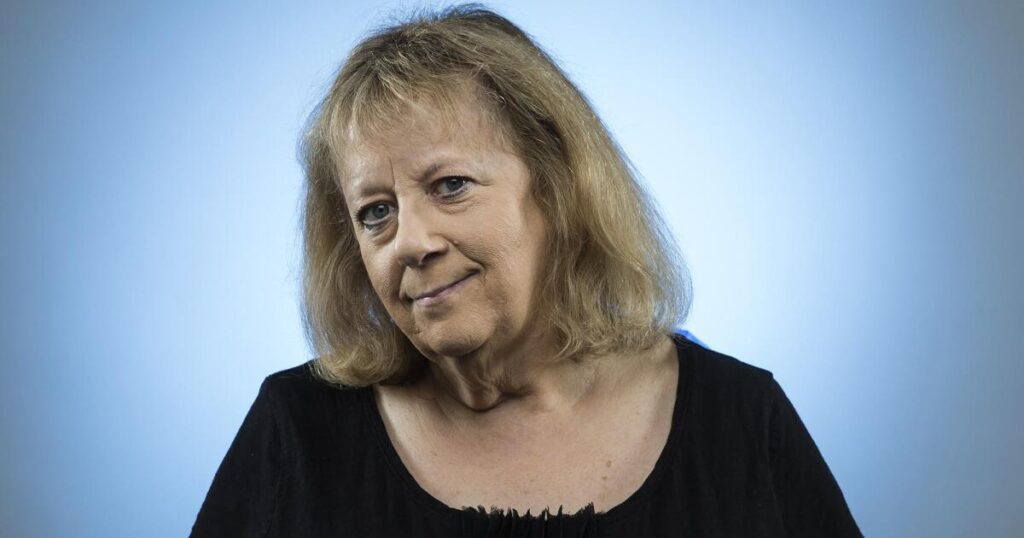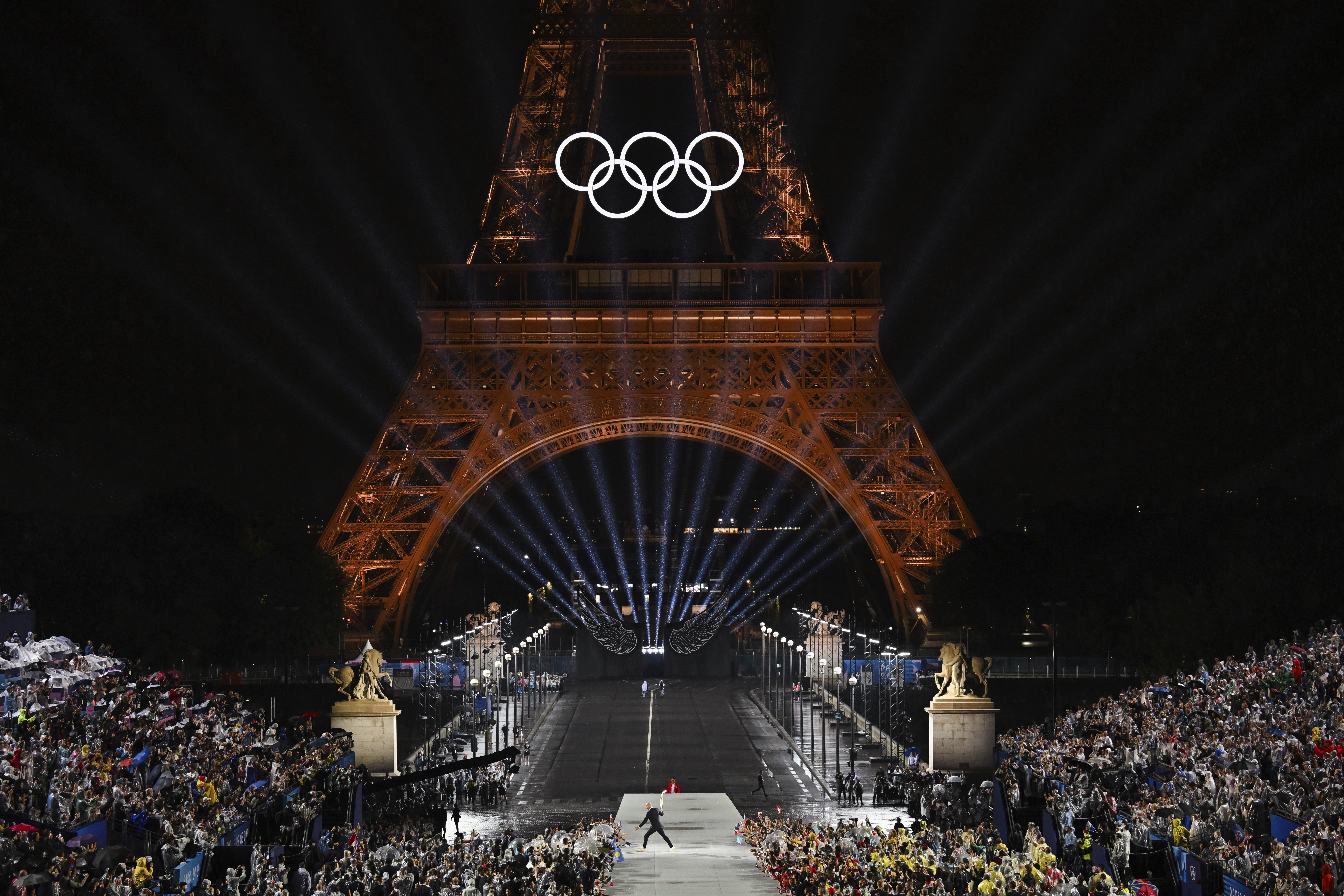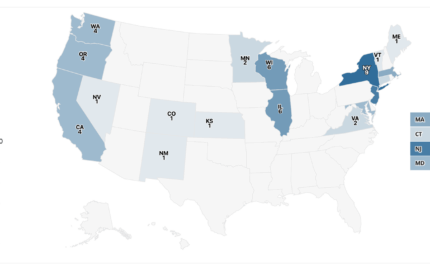Throughout her 47-year career as a pioneering sports journalist, including 34 years as a columnist for the Los Angeles Times, Helene Elliott covered 18 Olympics. She reported on some of the Games’ biggest stories and stars, including the U.S. hockey team’s “Miracle on Ice” victory over the Soviet Union in 1980, swimmer Michael Phelps, gymnast Simone Biles, sprinter Usain Bolt, and tennis player Maria Sharapova.
Elliott has also witnessed the steady expansion and transformation of the Games themselves. In 1984, the LA Summer Olympics welcomed 6,829 athletes; now, four decades later in Paris, 10,500 competitors are gunning for glory, including in relatively new events such as skateboarding, surfing, climbing, and – for the first time – breakdancing.
The Paris Games are being touted as the first to reach gender parity among the athletes, almost 30 years after the International Olympic Committee pledged to promote “women in sport at all levels.” Events once open only to men, such as luge, ice hockey, curling, weightlifting, and boxing, have been added to the women’s roster.
Elliott – who in 2005 became the first female journalist to receive the Hockey Hall of Fame’s Elmer Ferguson Memorial Award for her distinguished coverage and professionalism – spoke to Nieman Reports on two occasions about the Paris Olympics, how reporting on the Games has changed and the rise of women’s team sports. This conversation has been edited for length and clarity.
What was it like covering your first Olympics? What were some of the big story lines from those Games?
My first Olympics was the 1980 Lake Placid Games. I was working at Newsday [in Long Island, N.Y.] and my assignment was to cover figure skating and hockey. My boss said, “When the U.S. team is eliminated, you can just kind of focus on figure skating.” That didn't go the way he thought it would.
At that time, the political climate between the U.S. and what was then the Soviet Union was very tense. The Soviet hockey team was considered the best in the world. Technically, they were amateurs, but in all but name, they were pros. They trained together all year. Most of them were listed as being members of the Red Army, but they were, in fact, full-time hockey players. The U.S. team [was] all basically college kids – all very young, not very much time to play together.

The U.S. team did a pre-Olympic tour, and they lost to the Soviets by a ridiculous score in a game at Madison Square Garden. That led people to think that the U.S. team would just have absolutely no chance in Lake Placid, that the Soviets would win gold for sure. But the U.S. came to Lake Placid, and they started off very well. They tied Sweden in their opener, and Sweden was a very strong team – and they just kept winning.
This [was] before the age of cable TV and 24-hour news cycles, before the internet, before cellphones, before all the things that we take for granted today. Lake Placid was – and, to a degree, still is – a very small town isolated in the Adirondack Mountains of Upstate New York, and it was very difficult to gauge what the reaction was of people outside of Lake Placid. But there was a sense that [the U.S. team] had caught the imagination of sports fans, including people who really didn't really care about hockey. For the U.S., it was patriotic support as much as it was hockey fan support.
People would send telegrams. [The players] got hundreds and hundreds of these, and would post them on the wall in the hockey rink. I remember standing there and looking at them and going, “Wow, people must be really paying attention to this!”
What stories are you most eager to see during the Paris Olympics?
I'm looking forward most to seeing how Simone Biles does, given what happened to her at the Tokyo Olympics. I'm curious to see how she approaches the Games this time, physically and mentally. She's been very open about how she sought help, and I think that's done a lot to take away whatever remaining stigma there is that surrounds mental health issues.
There are still people that say she was a quitter, and that bothers me. It wasn't that she quit; it was that she physically was unable to perform. She had lost her spatial orientation. When you're jumping 12 feet in the air, it's pretty important to have in your head where you're going to come down and how. She could have risked permanent injury if she were to continue competing.
Katie Ledecky will be a big story as well – the swimmer. She has won seven Olympic gold medals [and] 21 World Championship gold medals, the most in history for a female swimmer. She's just been dominating. She doesn't just win by a half a second or a second. This woman wins by body lengths – by incredibly ridiculous times and lengths. She's born to do this, and watching her extend her dominance will be a key viewing moment or several viewing moments during these Paris Games.
Sydney McLaughlin-Levrone, she's going to be a big story. She recently set a world record in the 400-meter hurdles at the Olympic trials, so that certainly marked her as somebody to watch. She's really dynamic, and she probably hasn't even fully tapped her potential yet. She's just an astonishingly good runner.
The U.S. track and field team is always very strong. One reason is Noah Lyles, who has a chance to win both the men's 100- and 200-meter dashes. Those are traditionally the glamour races of the Olympics. The winner of the men's 100-meters is usually given the nickname “World's Fastest Man.” Men’s track and field is huge around the world, and much more popular [internationally] than it is – in terms of spectators and interest – in the United States. So, Noah Lyles is going to be an international superstar.
A lot of sports fans take the approach of “I just want to talk sports. I don't want to talk politics.” But politics is just so inextricably interwoven in all of this. Russian athletes are not being allowed to compete under the Russian flag in Paris.
France has a history of sudden and extensive labor strikes, so you wonder if that's going to happen. And there's still the controversy over whether the Seine River is going to be clean enough for the triathletes to swim in. I know the mayor of Paris did a photo op where she swam in the river. But apparently the bacteria count is still pretty high.
How would you advise sports reporters to balance coverage of the Games with the sheer number of events?
Part of the problem is that the Summer Olympic Games are so massive. There's so many sports; there's so many athletes spread out all over the country. The surfing is going to be in Tahiti. So it's really hard to wrap your arms around the Summer Games. And I think the viewers’ attention span is probably shorter than it ever has been.
I can understand why TV would do quick hits of summing up Simone Biles’ life story in 100 words or in three minutes. But I would also like to see something accompanying it, whether it's on the NBC website or another NBC channel [in the U.S.]. Show me an in-depth feature on her or pick one of many other athletes to profile.
Don't just tell me the obvious. Tell me something I don't know.
How has coverage of the Olympics changed since the start of your career?
When I was in Lake Placid, I don't know how many reporters were there, but it was certainly nothing like what we saw later in Tokyo or Beijing or London. The number of reporters changes the dynamic. It's more and more difficult to get a one-on-one interview.
Getting access to the Olympic Village has, at times, been restricted. I can remember just going to the Olympic Village – where the athletes are housed – and just signing in, and that was OK. But then as time went on and security ramped up, you had to schedule a visit, you had to go through security, you had to do all kinds of things. It's just more difficult to do the kind of extensive one-on-one interviews and up-close-and-personal-things unless, of course, you're the TV-rights holder.
In 1900, in Paris, the first women were invited to compete at the Olympics. Now, in 2024, Paris is the first Olympic Games to reach gender parity. How much did the Olympics help push women's sports forward and, by corollary, coverage of it?
Absolutely, [the Olympics] were one of the few times you turn on your TV and see female athletes. There were female tennis players, Chris Evert and Billie Jean King, and all the people who came before them. But to see female athletes showcased at the Olympics and see them competing for gold gave it kind of a seriousness that I think forced a lot of people to take [female athletes] seriously.
1998 was the first year that there was a women's Olympic hockey tournament. The year 2000, women's water polo was added. In the Winter Games, luge and bobsled – previously limited to men – became open to women.
Women began to speak out. Women began to say, “Hey, I want to do this.” Especially in North America, the U.S. university system and Title IX has boosted so many female athletes and enabled them to compete at a high level when, 20 years before that, women couldn't do that.
The tone of the coverage has changed. It used to be, “Oh, girls play basketball! They can play well! They have ponytails, and the ponytails bob as they run up and down the court!” It's evolved from that to now discussing strategy rather than fingernails and ponytails. You’re seeing discussions of rosters, strategy, and [matters] beyond the commercial, the cosmetic.
I think it's a reflection of society as a whole. As women began to enter the workforce, as Title IX took hold, as women began to more frequently run for public office or take positions in executive suites, that carried over to sports. Women wanted to read about other women competing.
Looking toward our domestic sports coverage: Women’s sports have historically lacked resources, funding, and reporters on the ground – but that is finally starting to change. What are some of the factors that pushed women’s sports coverage to where it is now?
I think we're in the middle of a seismic event right now regarding women's professional sports. I was just reading that the Angel City [Football Club] – the National Women's Soccer League team in LA – sold for a record amount of money for an NWSL team.
I was also recently looking at the ratings numbers for the WNBA, the media rights deals that the WNBA is getting, record attendances at WNBA games and National Women's Soccer League games. Of course, Caitlin Clark has brought so much attention and roped in people who either weren't aware of women's sports or maybe scoffed at them before. I think it's key that so many NBA players have marveled [at] and praised her.
Since [the WNBA] was under the umbrella of the NBA, which already had been established and had credibility, marketing muscle, and TV muscle, I think the WNBA was the catalyst toward launching all of this and opened this whole door to women's team sports. It made a lot of people take the WNBA seriously and think, “Wow, the NBA thinks this is worth backing. Maybe we ought to look at stories here.”
We're seeing an explosive growth in women's sports like hockey. That league is still growing. There was always coverage of Chris Evert, Martina Navratilova, Serena Williams and Venus Williams and other female tennis players, but as individual players. The explosion seems to be now in women's team sports. I'm curious to see whether this continues.
A long time ago, I covered the Cosmos in the North American Soccer League, and they were getting crowds of 77,000 and 70,000. People were saying, “Oh, this is just going to sweep the country. Soccer is going to become more popular than football and baseball.” And it all blew up because they didn't plan things out financially. With expansion in the WNBA or National Women's Soccer League or the Women's Professional Hockey League, I hope that it's all done carefully and with some sense of fiscal responsibility. You don't want this to just be a flash in the pan.
It also seems to be an almost uniquely American and Canadian thing where women's sports are celebrated. Is that true around the rest of the world? I've seen growth in women's soccer in England and France, but I'm not sure beyond that. There are still countries where women are probably discouraged or don't have many opportunities to play. And while it's wonderful to see the American female athletes do well, you want them to have competitors too. You want there to be competition worldwide.
An earlier version of this article misstated the length of Elliott's career as a journalist. Her career has spanned 47 years, not 40.



